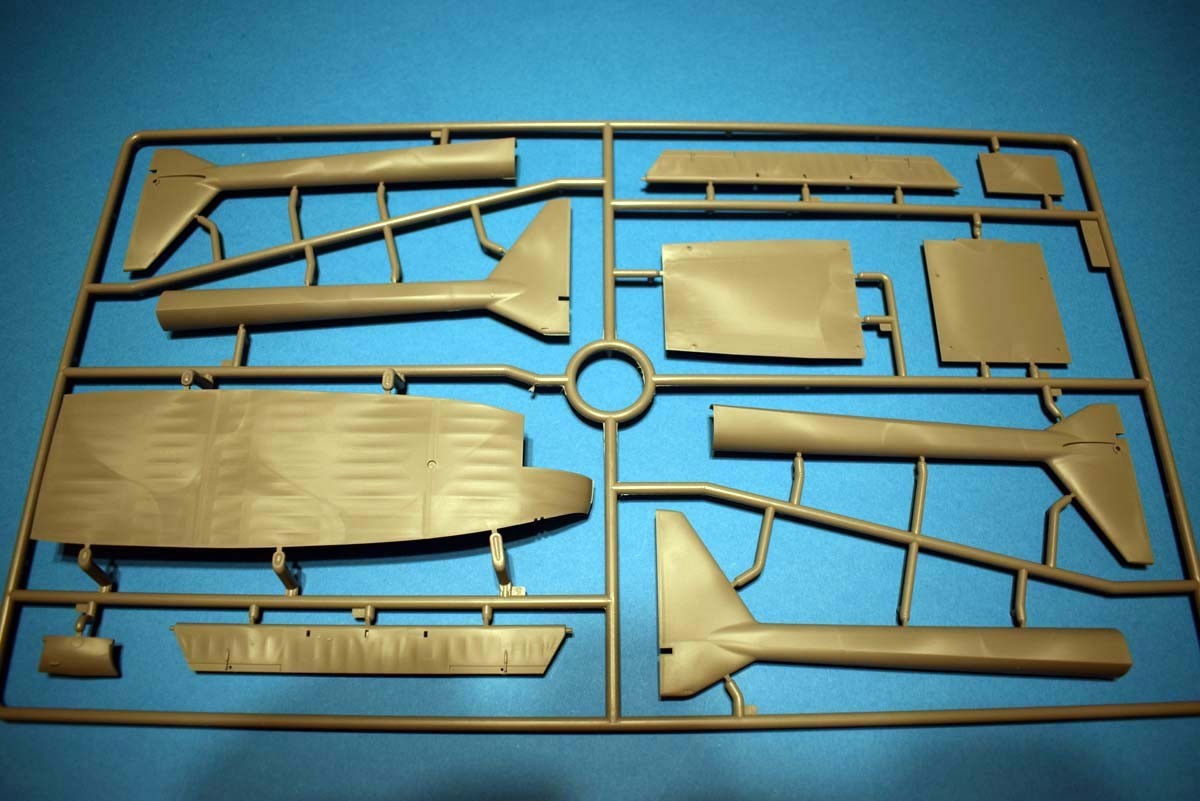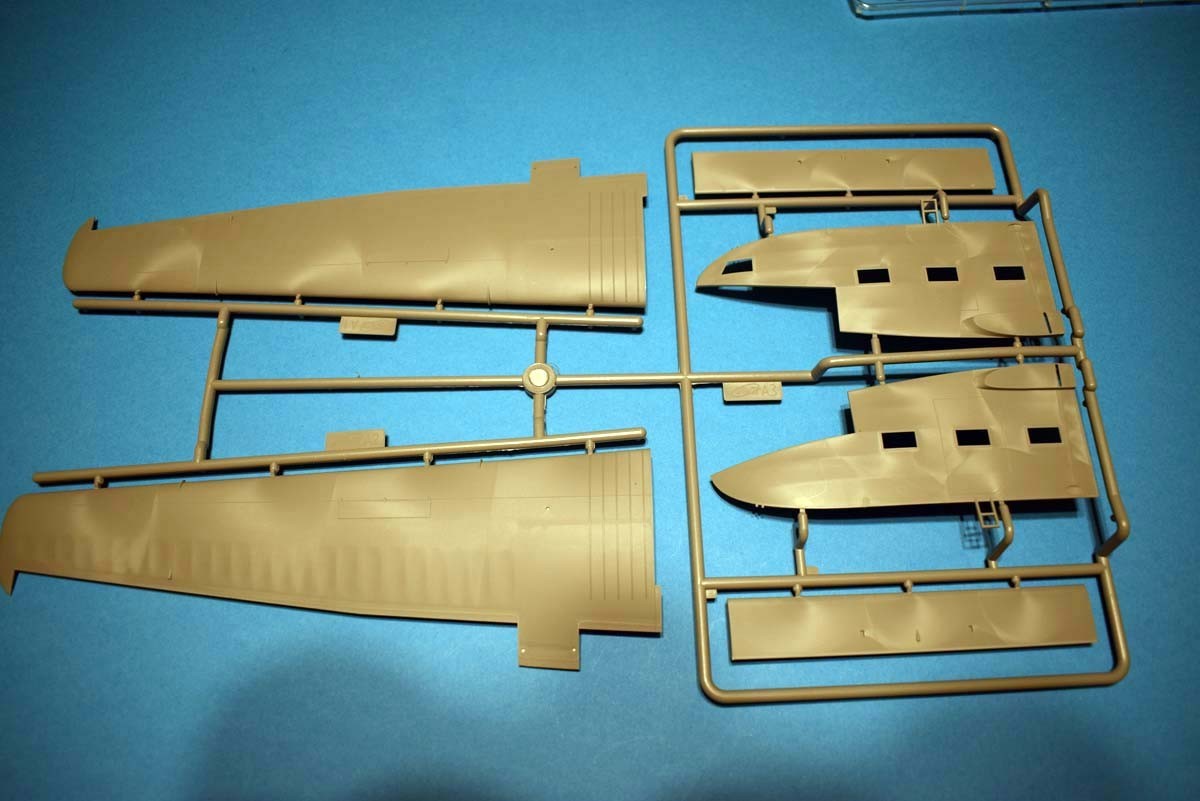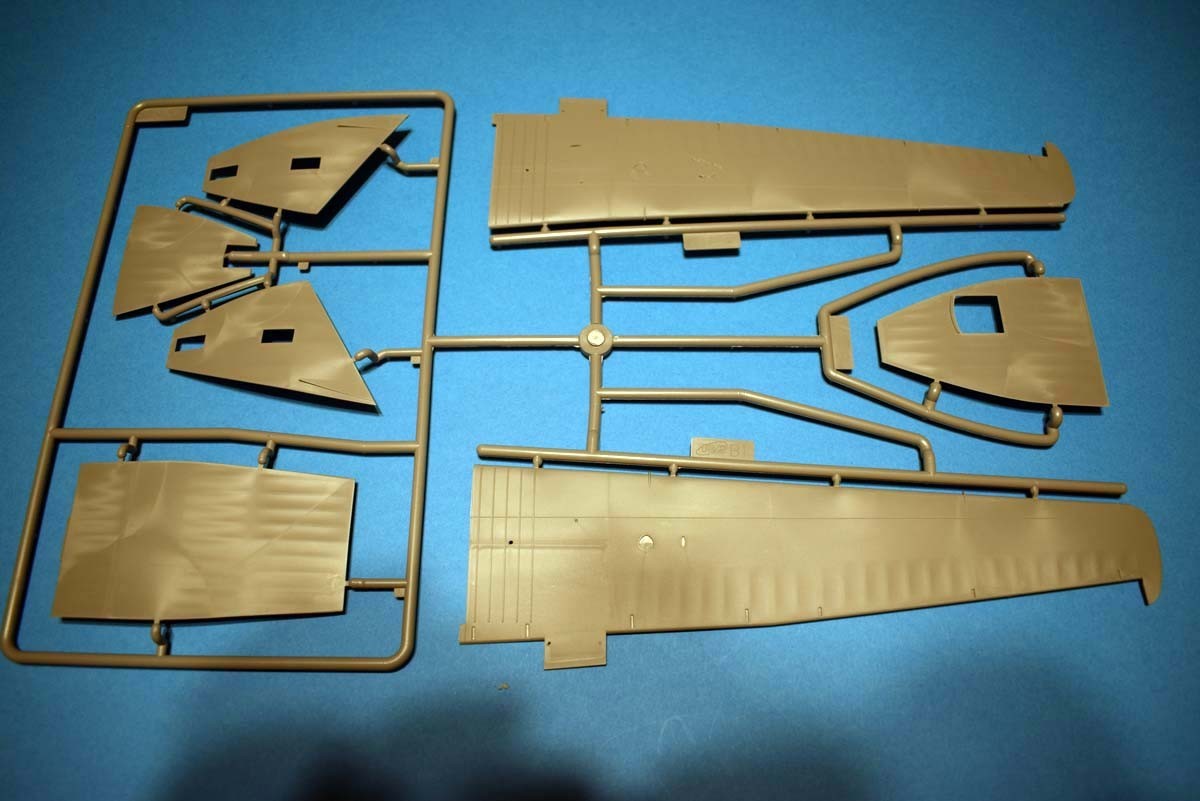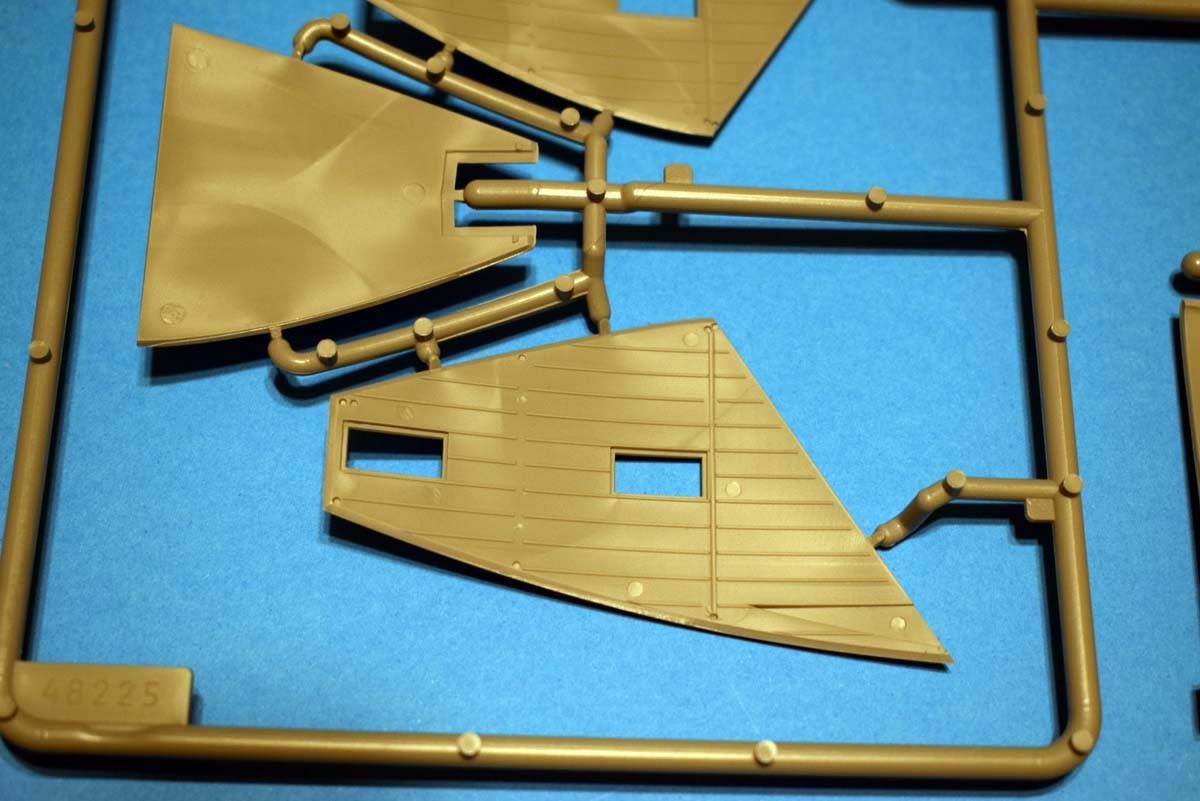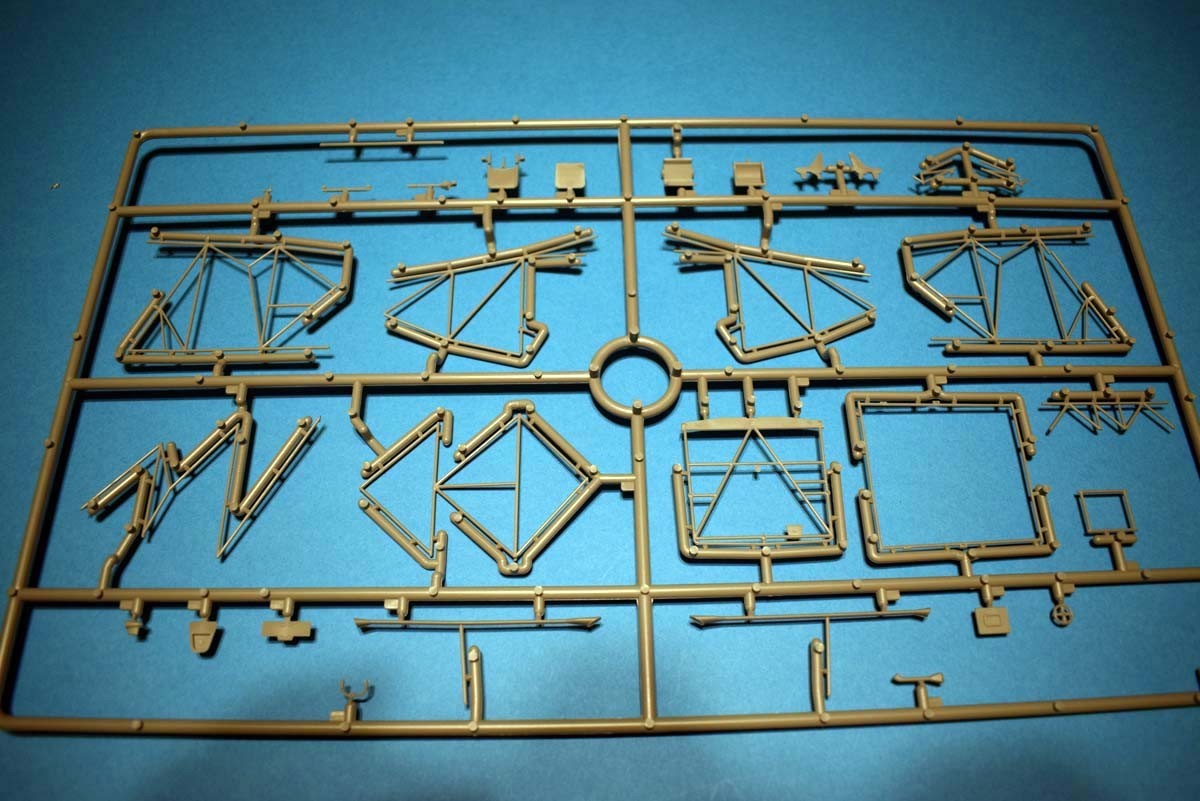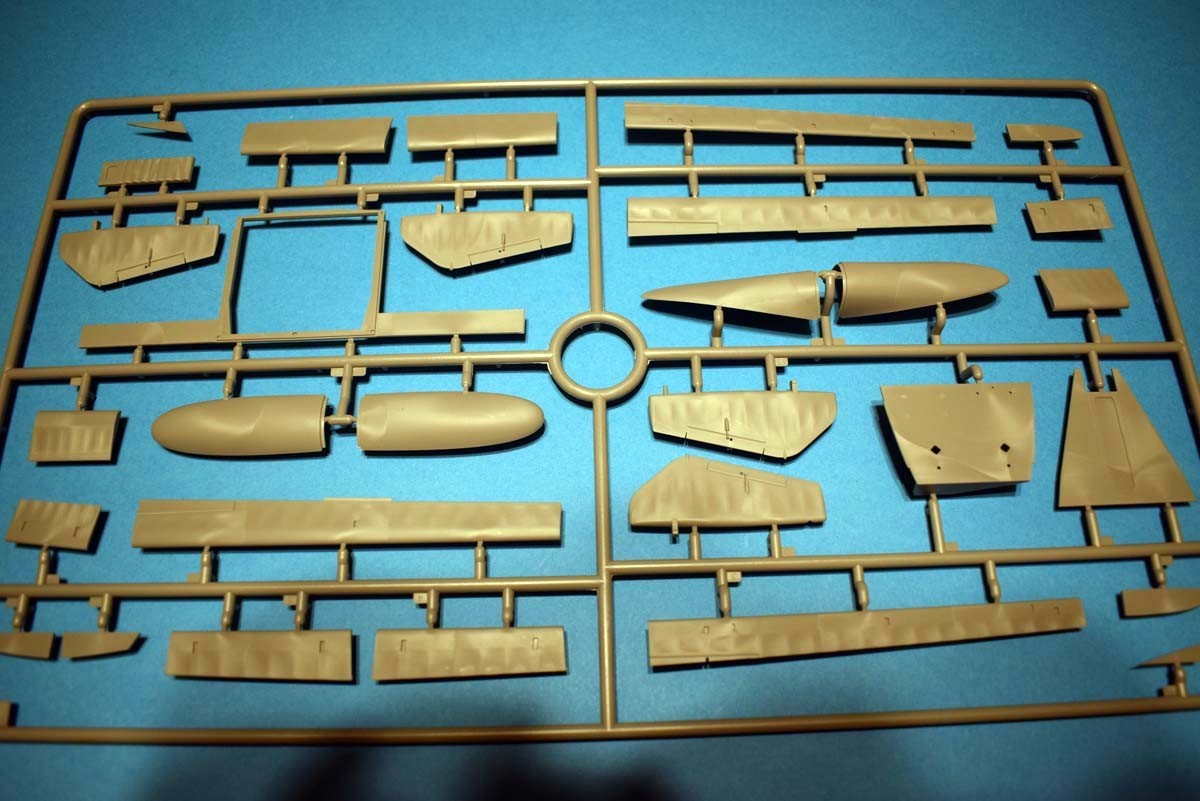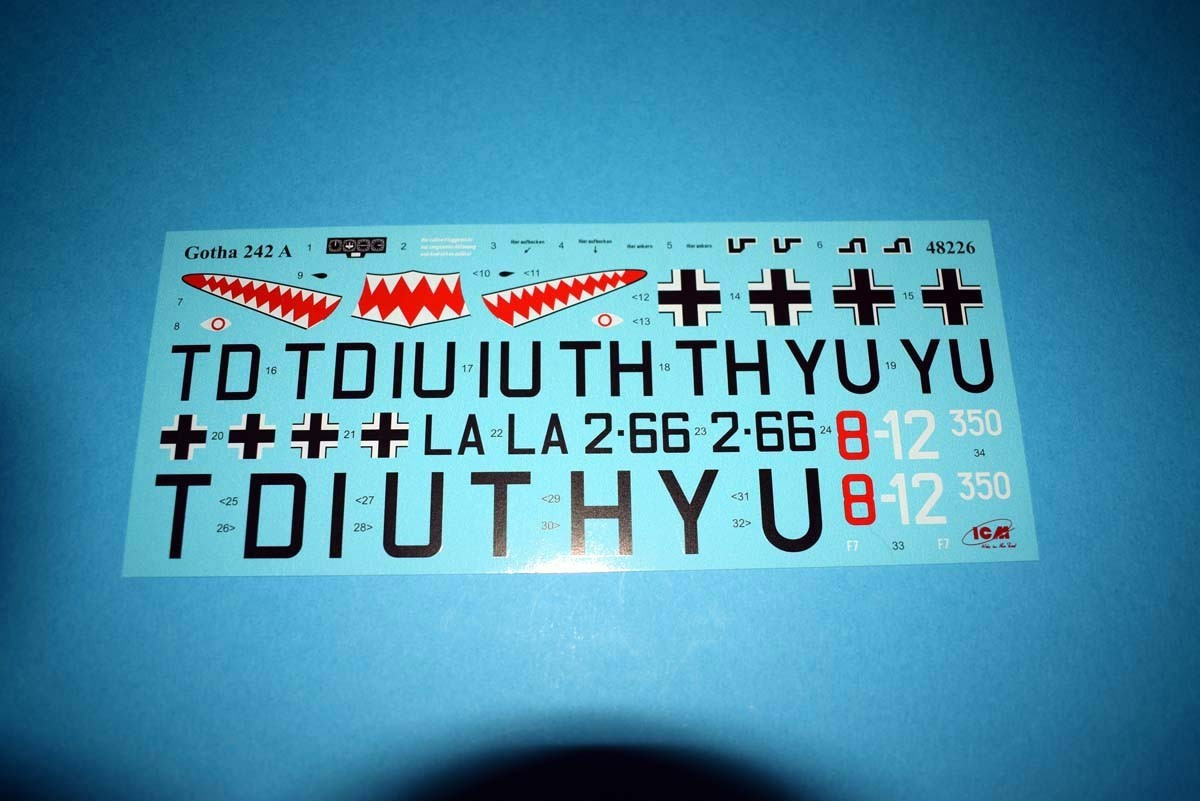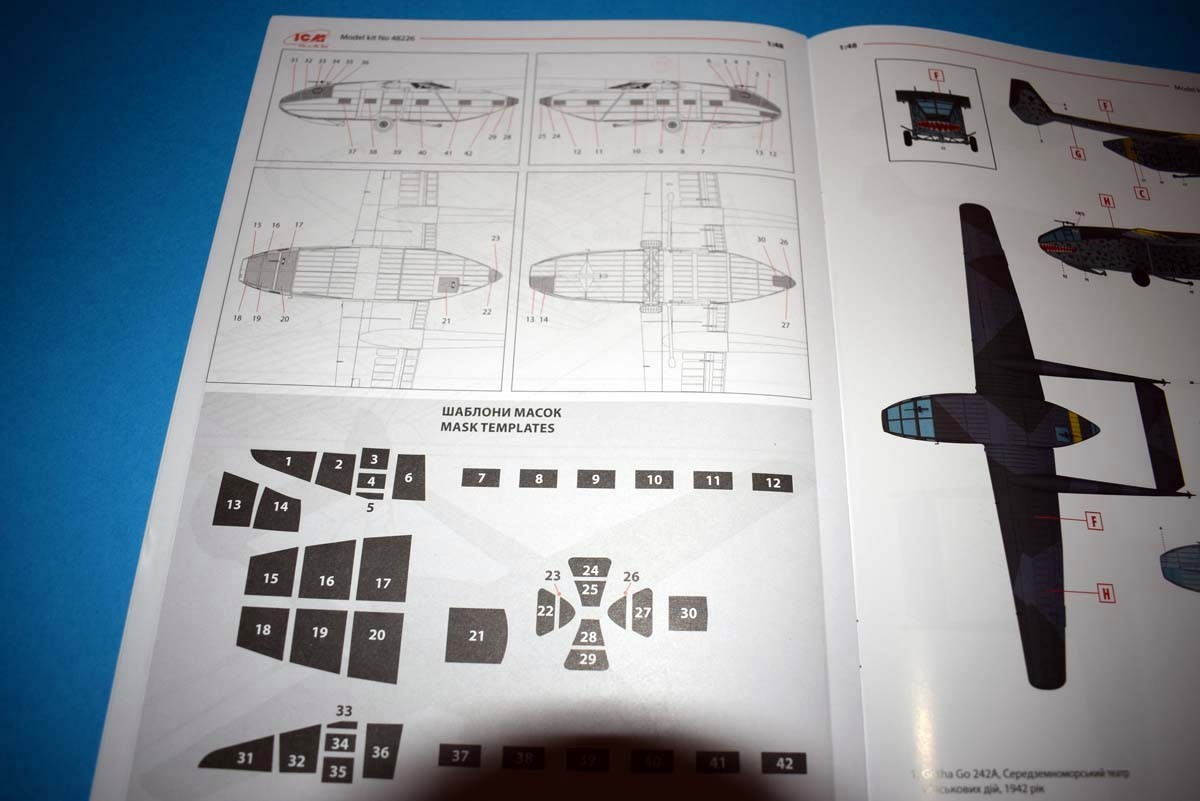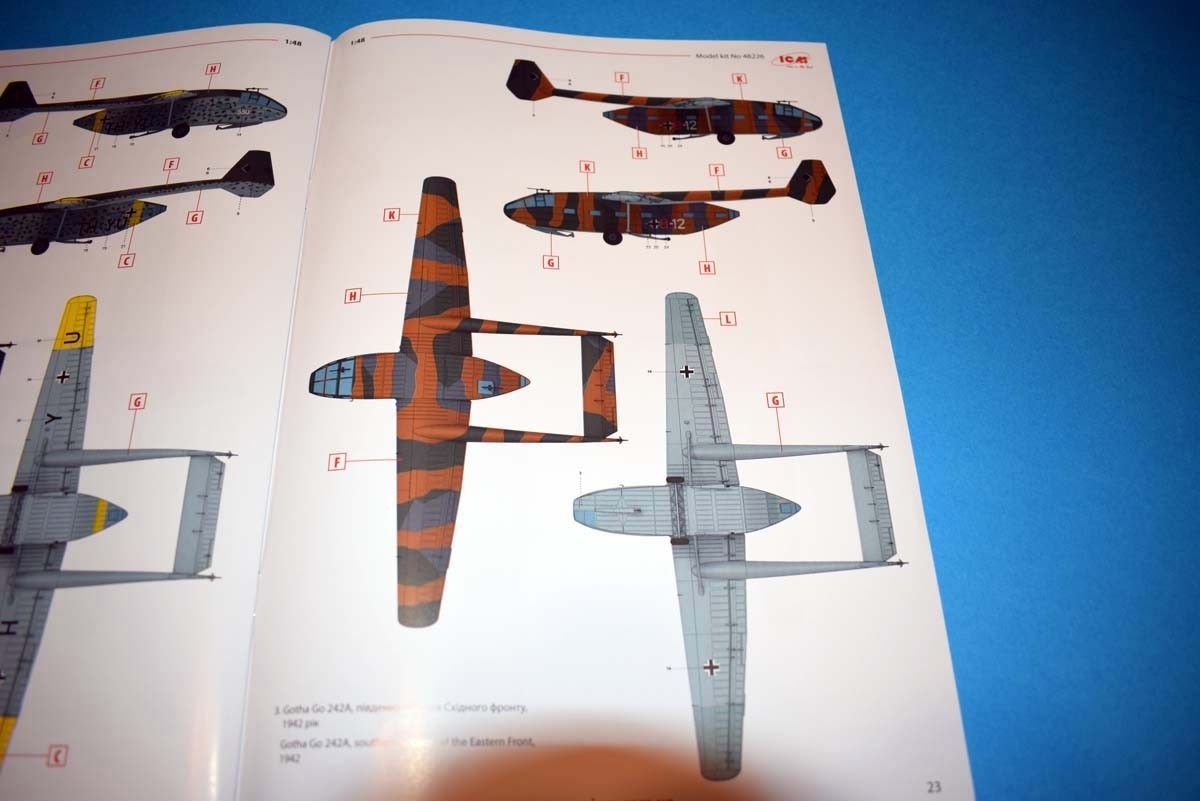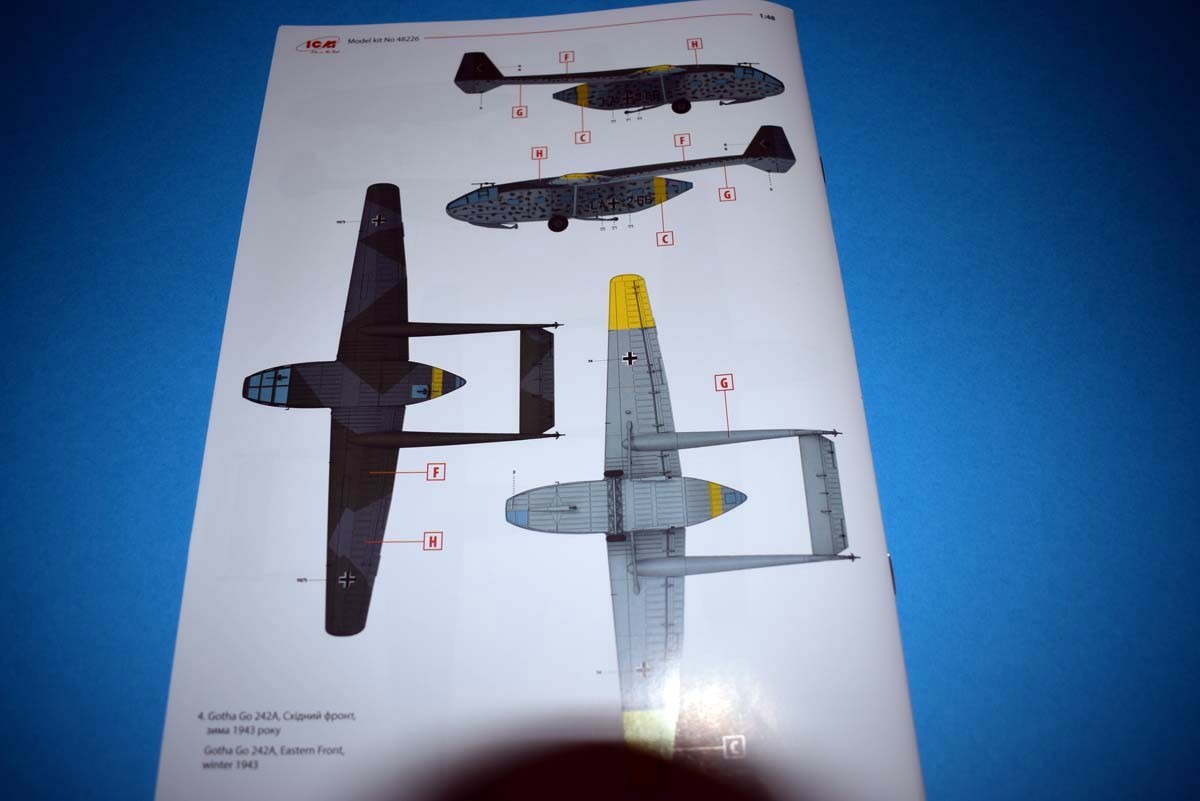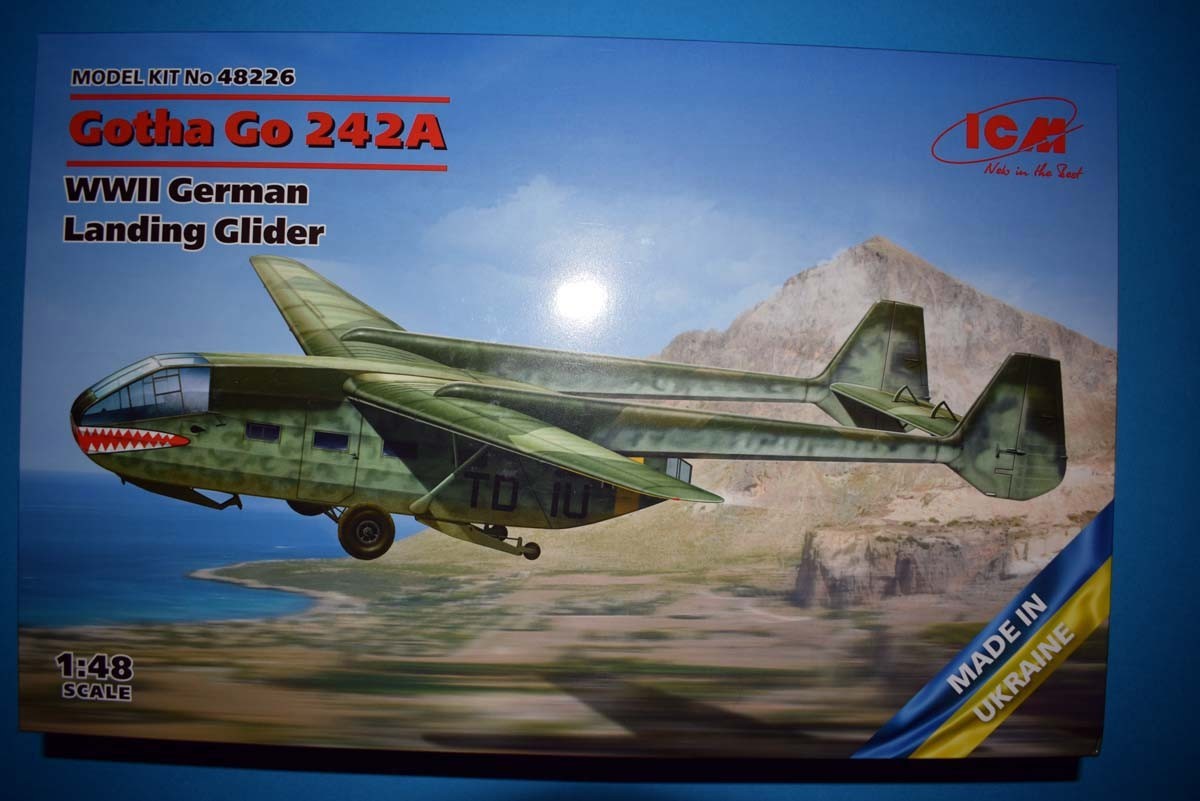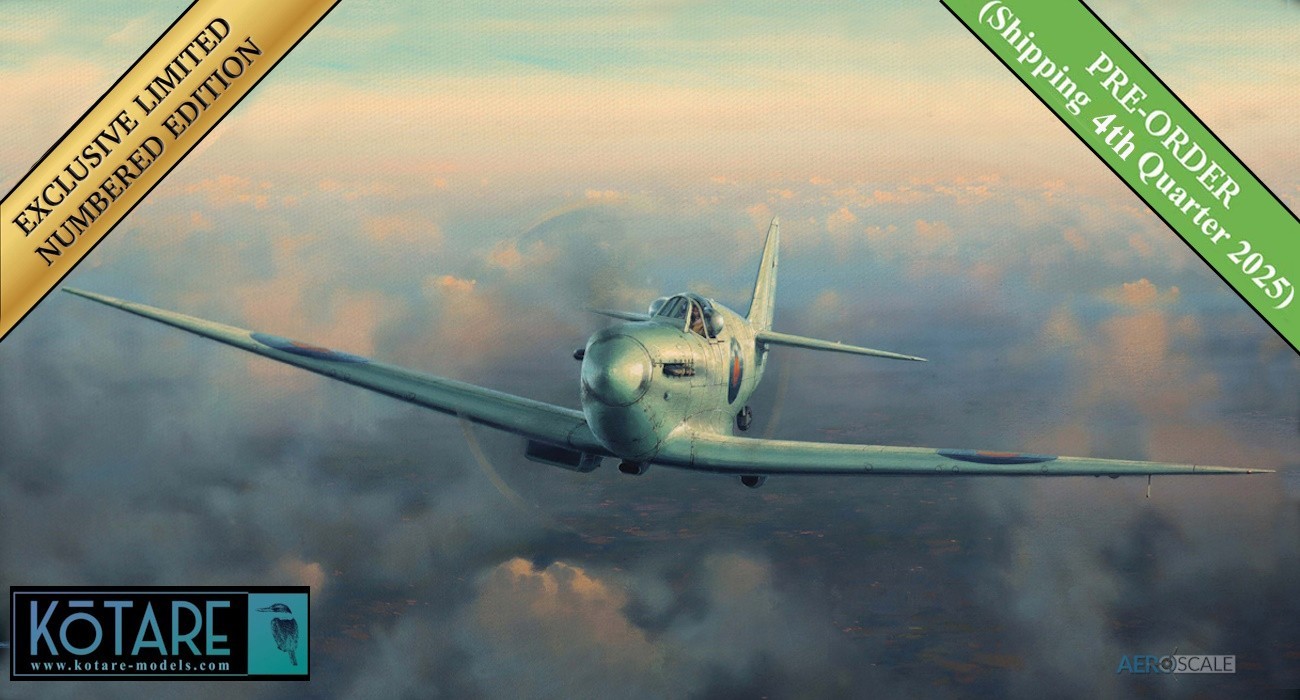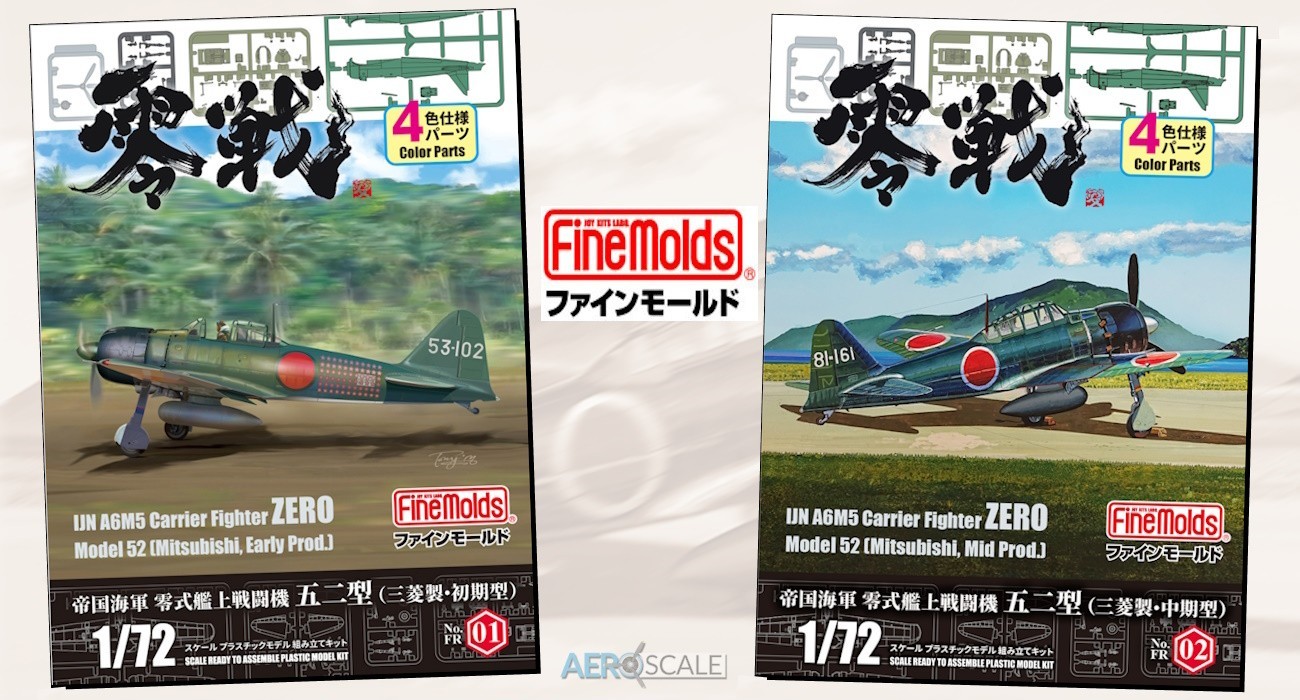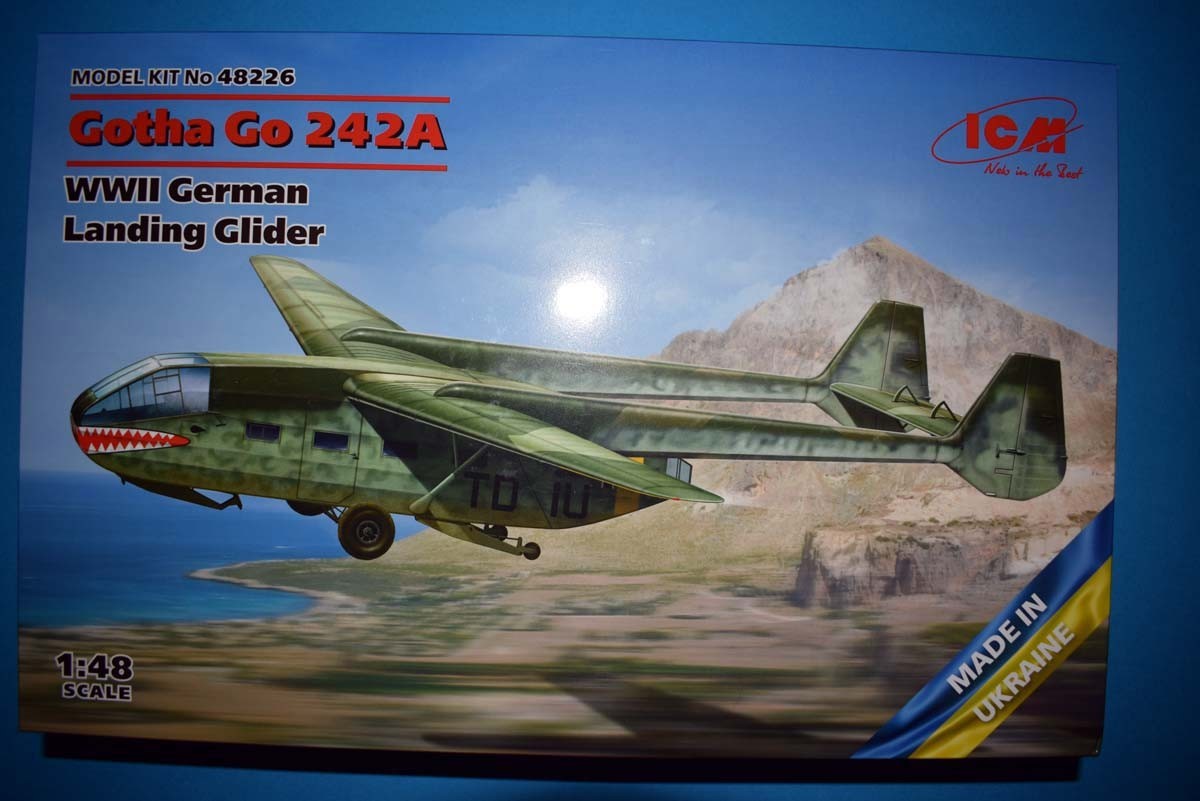
Introduction
The following introduction is as supplied by ICM:
The Go 242A1 amphibious transport glider was designed to deliver military units to the rear of the enemy. It could carry 21 fully equipped soldiers, and as a transport – military cargo, for example, an army car or a field gun. The cargo compartment of the fuselage was made of steel pipes, the wings were made of wood, the skin of the glider was made of fabric with water-resistant impregnation. Loading was carried out through a hatch in the tail part of the fuselage. The rear location of the hatch was convenient because if the glider collided with any obstacle during landing and damaged its nose, the hatch remained intact, which allowed quick unloading in combat conditions. Go 242A1 gliders, in addition to transporting personnel, were also used to supply troops on the Eastern Front and in North Africa.
Review
This offering from ICM is the Second release of the Go 242A. The model is supplied in a flip top cardboard tray, with an additional card lid showing the artwork for the release. Inside of the box there are two plastic bags containing all of the parts for the model, and one of these also contains an additional bag with the clear elements in it. The instruction booklet is loose in the box, with the decals sheep protected between the pages. An examination of the parts reveals nothing of concern, other than some flow lines in the plastic which have not caused any defamation to the surfaces.
The internal areas of this release have a good amount of detail present in terms of a sizable quantity of the tubular frame structure of the glider, which gave the aircraft its rigidity. Seats for the Paratroopers are provided with a nice level of detail, but some aftermarket products or scratch work will be needed to replicate the belts for the seats. I am quite pleased to find a brace across the width of the fuselage to support the wings after addition. There is a good quantity of additional internal structure replicated on the inner face of the fuselage panels, but I have located some ejector pin marks that will need to be addressed. The cockpit is fairly simplistic in its design, offering the foot controls, control sticks and pilot’s seats. A reasonable level of detail has been provided in the pilots seats, but again harness detail has been omitted. The minimal number of instruments, and unusual placement design has been well replicated. It has been missed in the instruction booklet, but ICM has supplied decals for the flight instruments so you will need to remember to add them yourself.
The external features of the model have been very nicely tackled, with a good cloth appearance on the fuselage surface. The rib detail has also been well detailed and should please the modeller. There is a hole that needs to be made in a portion of the fuselage and I am pleased to see that ICM has provided the location and size of the drill bit needed. The flight surfaces and controls exhibit the same nice level of detail as the fuselage, and again dependant on the join should look good. The rear loading area with the lift up tail has been replicated with its bracing, and internal and external detail and can be used on the model either open or closed. The booms of the tail supports, which I believe are metal are well detailed but may need some filling to hide the seam along the centres. The physical tail and fins exhibit the same nice detail as the fuselage.
The various control linkages and hinges that are between the wings and flight controls have been supplied separately and should add a nice level of detail on the finished model. The defensive machine guns which are both mounted on the top with one facing aft and one forward. The change here from the previous offering is the deletion of the nose wheel and the body being given a nose skid and 2 rear skids with small wheels fitted for movement on the ground I suspect. The clear portions of the model meet my requirements and I was again pleased to find that ICM has provided a pattern for cutting masks for all the clear areas of the model. ICM has also gone to the trouble of supplying four ways drawings to guide the modeller in placement of the masks.
This release from ICM has been provided with four finishing options which are as follows:
Gotha Go 242A, Mediterranean Theatre of Operations, 1942
Gotha Go 242A, presumably Eastern Front, Summer 1942
Gotha Go 242A, southern section of the Eastern Front, summer 1942
Gotha Go 242A, Eastern Front, Winter 1943
The decal sheets itself has reasonable quality decals provided, with me only just being able to feel them on the paper. Something provided on the decal sheet, but not shown for placement on the model are Swastika's which means that you do not need to source externally.
Conclusion
The quality of this offering from ICM meets my expectations in most regards but ICM need to make some additions to their models to lift them. Kits in this scale with the amount of interior that is displayed due to large hatches and large glazed areas need detail such as harness detail in my opinion. Work will be needed to tackle ejector pin marks but that is part and parcel of the hobby. I am pleased to see the increase in finishing offerings on this one and I hope or look forward to ICM releasing figures for or with one of these kits.
